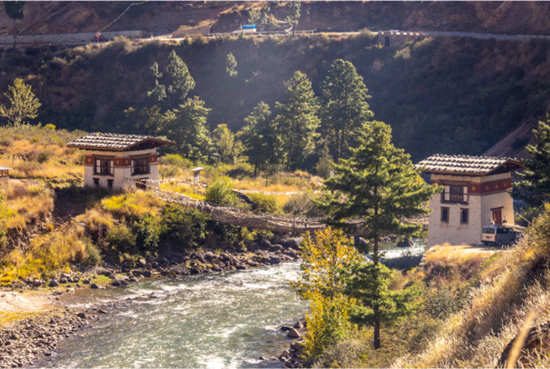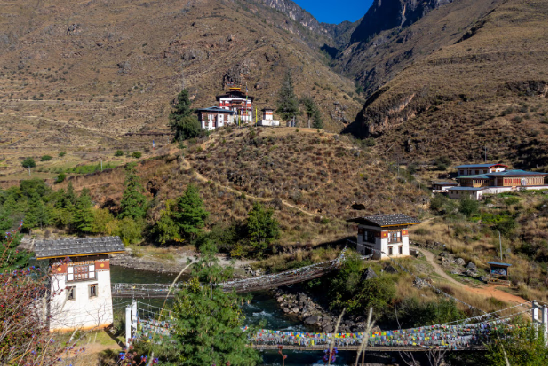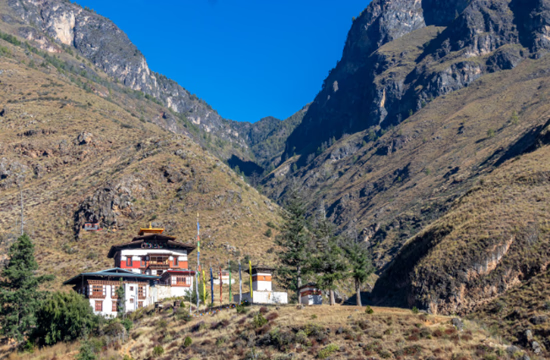
On the way to Thimphu from Paro, an observant eye might catch sight of an unusual, seemingly dilapidated bridge. At first glance, it appears stripped bare, almost as if abandoned to time. However, a closer look reveals that this is precisely how it was designed to be.
Built in the 1300s by the legendary iron bridge builder Drupthob Thangtong Gyalpo, this bridge is one of the 108 chain-link bridges he constructed. It remains a well-known landmark among Bhutanese travellers, many of whom pause to cross it, marvelling at its enduring craftsmanship.
Despite its age, the bridge is structurally sound and can still be crossed leisurely—a testament to Thangtong Gyalpo’s exceptional blacksmithing skills. Standing on it offers a unique sensation, as though suspended in mid-air, with the river’s wind creating an almost ethereal feeling of movement, perhaps even flight.
In most countries, the work of great blacksmiths is locked away in museums, shielded behind glass, never to be truly experienced. But Bhutan is different. Here, visitors can walk across a 700-year-old engineering marvel, feeling the weight of history with every step—a living tribute to one of the nation's greatest craftsmen.

A Path to the Temple of the Excellent Horse

The bridge leads to the picturesque Tachogang Lhakhang, or the "Temple of the Hill of the Excellent Horse," nestled at the base of a mountain. This sacred temple, also built by Thangtong Gyalpo, houses an array of important relics, including statues of Lord Buddha, Zhabdrung, Guru Padmasambhava, and Chenrezig Avalokiteshvara. The temple also safeguards ancient scriptures (the Kangjur and Tenjur) and even the revered blacksmith’s own walking stick.
The surrounding hills, though bare of trees, offer a peaceful riverside setting, ideal for a quiet picnic—provided one avoids areas frequented by cattle. In summer, a gentle breeze makes for a scenic and refreshing stroll, while winter brings a harsher chill, requiring visitors to dress warmly.
As the bridge lies en route to Paro Airport, it is almost unavoidable for travellers. Yet, rather than merely passing by, one should take a moment—like many Bhutanese do—to step onto the Chain Link Bridge and experience over 700 years of Bhutanese history firsthand.
